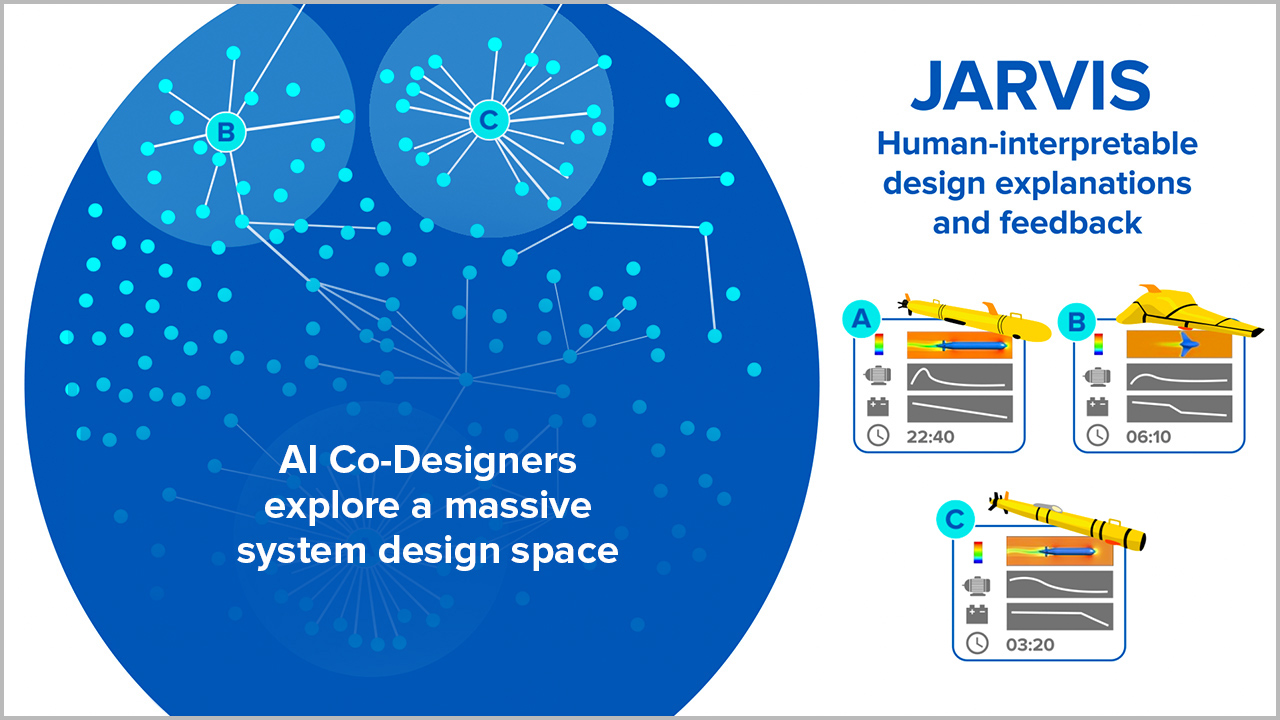Charles River Analytics and partners at Collins Aerospace were awarded a ~$6M contract from the US Air Force and DARPA to prototype a Joint, Adaptive, Robust Visualization and Interaction System (JARVIS) to support the design of complex cyber-physical systems. JARVIS is being designed to combine human users’ deep expertise and design intuition with a machine’s ability to explore and characterize vast search spaces to discover novel solutions to cyber-physical systems design problems.
Cyber-physical systems design is extremely complex, involving dozes of domains, and requiring subject matter expertise from designers and engineers across many disciplines. JARVIS has the potential to allow humans and machines to work collaboratively, mitigating the potential biases of human designers, while still incorporating human insights and creativity into the design process. Part of this vision is that designers will also be able to review and direct the activity of AI co-designers throughout the systems engineering lifecycle, providing critique and guiding design outcomes.
JARVIS is being developed under the Symbiotic Design for Cyber Physical Systems (SDCPS) program. The goal of SDCPS is to enhance innovation in design through AI-based approaches that dramatically reduce the time from system inception to deployment (from years to months). The team plans for JARVIS to provide the bridge between that AI tech and human experts, and enable engineering teams to create highly performant military-relevant cyber-physical systems on unprecedented timelines.
“What’s interesting about JARVIS and the SDCPS program is that we’re not just using AI to exhaustively explore a design space; we’re also creating tools that help engineering teams discover and understand promising—but possibly very unconventional—AI design outcomes, injecting their own unique expertise to seed and refine these designs as part of a collaborative human-machine process,” said Dr. Ryan Kilgore, Director of Human-Centered Intelligence Systems and Principal Investigator on the JARVIS effort.
Contact us to learn more about JARVIS and our other human-computer interaction capabilities.
This material is based upon work supported by the United States Air Force and DARPA under Contract No. FA875020C0074. Any opinions, findings and conclusions or recommendations expressed in this material are those of the author(s) and do not necessarily reflect the views of the United States Air Force and DARPA.





